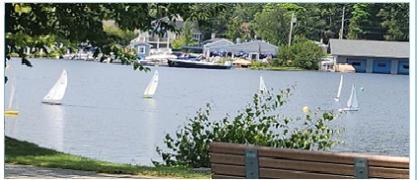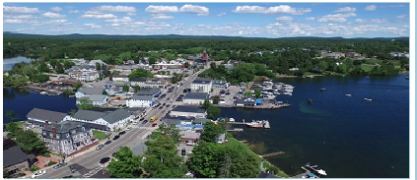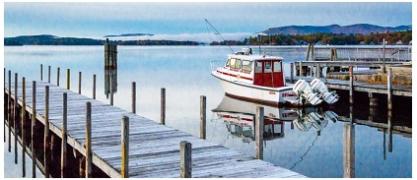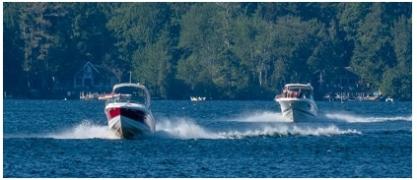2019 Assessment Summary Report
Wolfeboro Waters
2019 Assessment Subcommittee Summary Report February 26, 2020
Executive Summary - Page 1
Lake Wentworth, Crescent Lake, and Rust Pond in Wolfeboro, NH each have been the subject of a watershed assessment and management plan that have recommended goals and priorities for mitigation activities. Actions have been taken to respond to the plan recommendations, many of which have been seeking to reduce the addition of more nutrients to these waters. These actions over the years are resulting in measurable improvements in water quality.
Mirror Lake also has been the subject of such a plan and actions have been taken in response to limit the addition of nutrients there. However, Mirror Lake continues to experience cyanobacteria blooms, likely the result of releases of large amounts of phosphorous to the water from the sediment on bottom of the lake during low oxygen conditions.
Lake Winnipesaukee in Wolfeboro, other than Winter Harbor, was the subject of much broader water quality testing in 2019 than in the past and the results were good.
Winter Harbor over the past few decades has experienced noticeable growth of algae, plants, gunk, and biofilm slime on its sand and rock bottom that are undoubtedly the result of increased amounts of nutrients being added to the harbor. While leakage from shoreline septic systems and releases from the bottom of the harbor during low oxygen conditions may contribute some of these nutrients, multiple lines of evidence suggest that sources of storm water runoff are by far the most important sources—sources that can be addressed to preserve and enhance its water quality.
A small and brief cyanobacteria, likely Anabaena/Dolichospermum bloom, occurred at the end of June 2019 in Winter Harbor. The bloom occurred during a period when total phosphorous levels in the water were between 8.7ug/L and 11.7 ug/L --above NHDES’s recommended level of 8.0 ug/L.
Several different types of cyanobacteria have been identified in Winter Harbor water, most with the potential to produce and release cyanotoxins. The concentrations of these different types vary over time. When phycocyanin fluorescence data in concentrated water samples indicate the presence of significant amounts of cyanobacteria, often few are seen microscopically, suggesting the presence of tiny picocyanobacteria, which do not form traditional blooms, but which also can produce cyanotoxins. Future e-DNA analyses should enable us to better track the presence and concentrations of picocyanobacteria and the other types of cyanobacteria present.
The traditional water quality parameters that result from the UNH and NHDES voluntary sampling programs are valuable for assessing sources and additions of nutrients to the harbor and the risks of blooms and presence in the water column of many types of algae and cyanobacteria (e.g., Anabaena/Dolichospermum, Microcystis, and picocyanobacteria). However, they do not directly measure the risks or presence of the biological growth on the bottom sediment and rocks in Winter Harbor, nor of Gloeotrichia cyanobacteria that bloomed unexpectedly there in late August 2018--a type of cyanobacteria that lives much of its life cycle and benefits from the nutrients in the bottom sediments. Different approaches will be needed to measure what is happening on the lake bottom, to assess risks of future biological growth and blooms (including Gloeotrichia), and to track progress in reducing such risks.
Winter Harbor has water quality problems that need to be addressed, yet the results of the most common measures of water quality for it are similar to those for most of the rest of Wolfeboro’s Waters. Therefore, we need to determine where what we learn in Winter Harbor applies elsewhere in Wolfeboro Waters and New England.
Full Report in PDF below.
| Attachment | Size |
|---|---|
| 21.43 MB |










